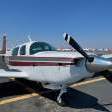Air/Oil Separator for the 252s
-
Members Online
- TCC
- Fly Boomer
- NickG
- wstull87
- Pinecone
- 201er
- Greg Ellis
- WilliamR
- ad5ut
- EricJ
- MikeOH
- Z W
- shawnd
- CCAS
- ta2too
- Niko182
- Flyler
- TangoTango
- Richie the C
- 201Steve
- Wingover
- Matt Hamel
- ReboTim
- acekng1
- rbmaze
- MJHarm
- donkaye, MCFI
- Elan802
- Ragsf15e
- Jim F
- eman1200
- Hank
- Guillaume
- Vance Harral
- exM20K
- hammdo
- NMMooneyPilot
- 201Mooniac


Recommended Posts
Join the conversation
You can post now and register later. If you have an account, sign in now to post with your account.